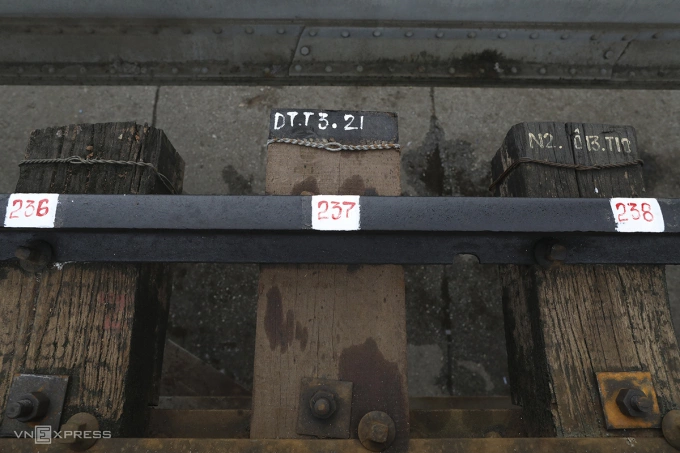Edition: International | Vietnamese
© Copyright 1997 VnExpress.net. All rights reserved.
 |
|
The bridge across the Red River was designed and built by French firm Daydé-Pillié in September, 1898. It opened to traffic in 1902, running more than 1,691 meters long, with a rail track in the middle and road transportation on either side. |
 |
|
During the Vietnam War (1955-1975), the bridge had some of its parts damaged and even destroyed by enemy bombing. The Vietnamese government fixed the damage, building the spans that are in use until today. |
 |
|
Workers of Hanoi-based Ha Hai Railways Co. maintain a section of the bridge a few days ago. The company was assigned the task of managing, operating and preserving the bridge by the Vietnam Railways Corporation (VNR) in 1986. |
 |
|
Despite the regular maintenance, however, the bridge carries worsening signs of wear and tear. |
 |
|
A new wooden sleeper was put into use in March this year to replace an old one. |
 |
|
The road surface on the bridge is damaged in several sections. |
 |
|
A rusted parapet section is welded. |
 |
|
Railway employee Nguyen Manh Thang, 51, patrols the bridge every day. |
 |
|
A signboard calls on vehicles to limit use of the bridge. |
 |
|
Trains use the bridge around 20 times per day. |